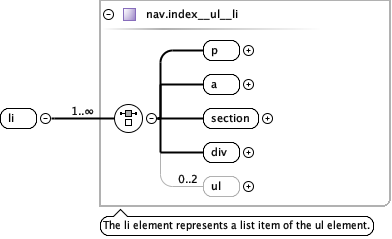|
Diagram
|
|
|
Properties
|
|
| Children | a, div, p, section, ul |
|
Instance
|

